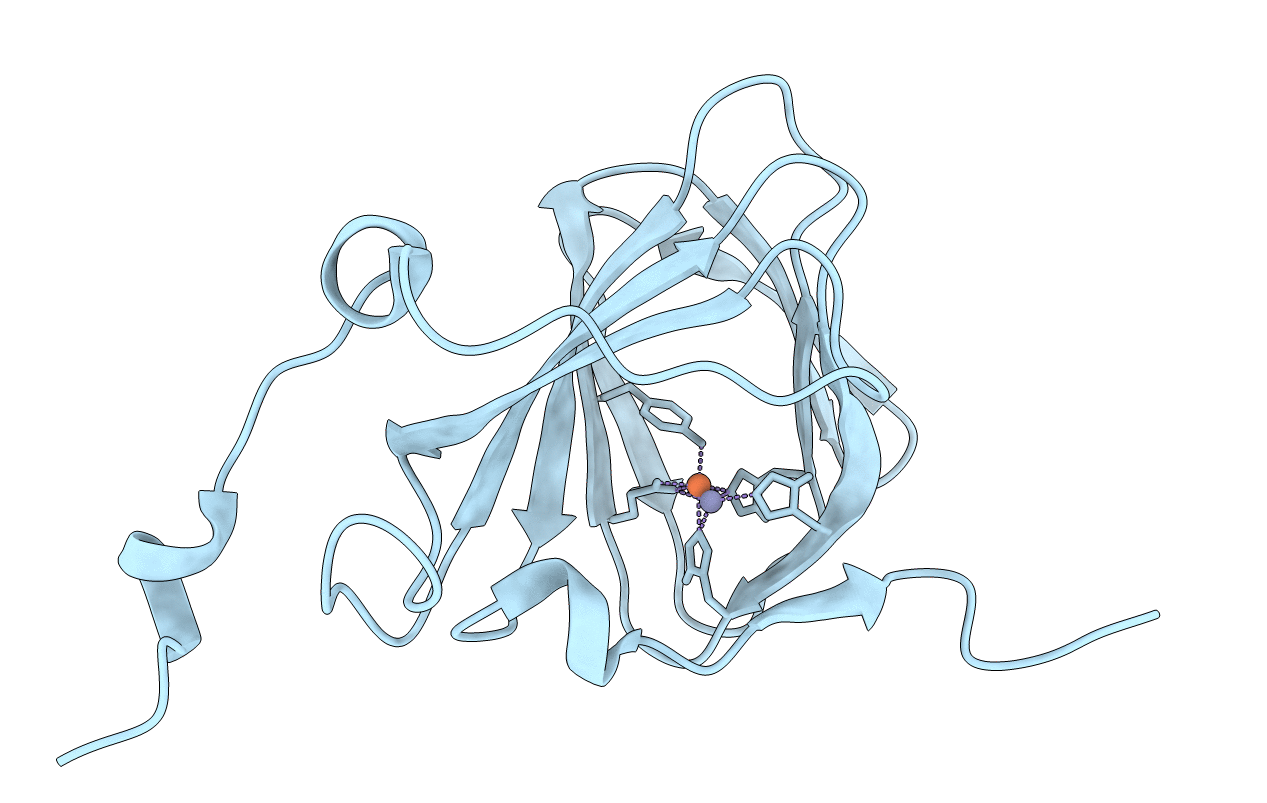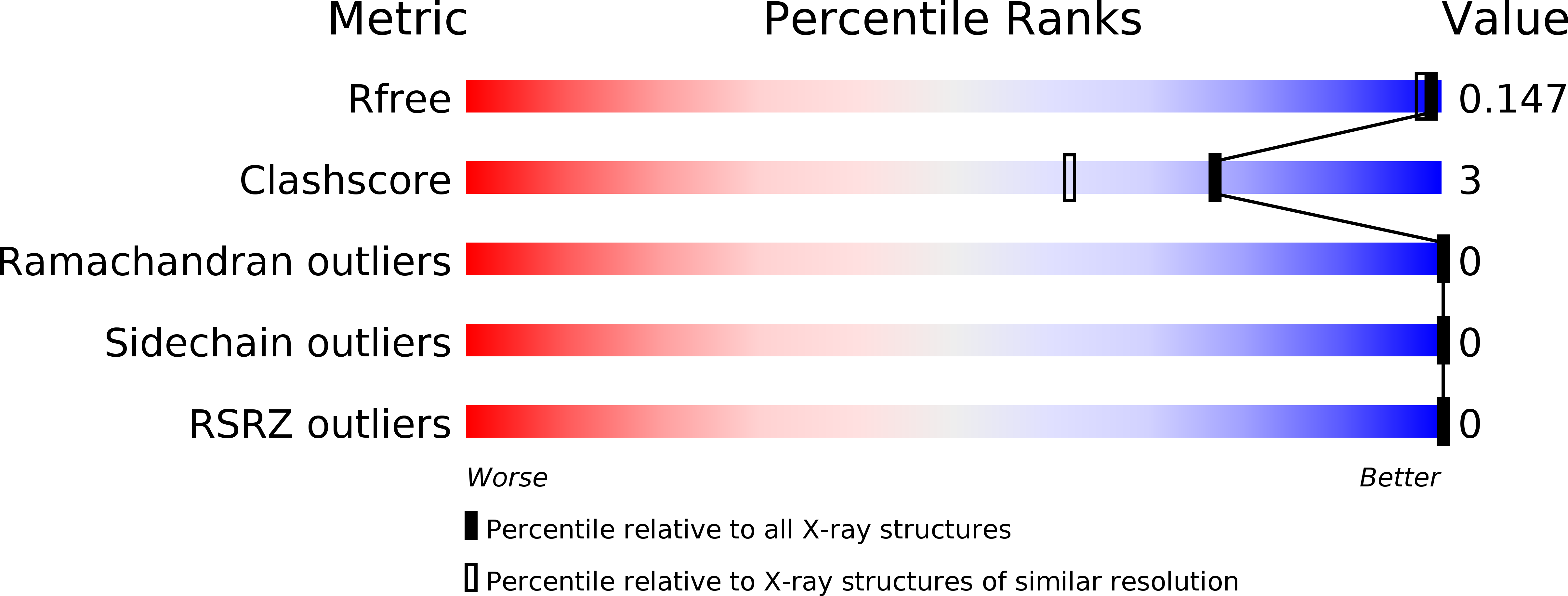
Deposition Date
2016-09-27
Release Date
2017-06-14
Last Version Date
2024-03-06
Entry Detail
PDB ID:
5TG0
Keywords:
Title:
Crystal structure of the dimethylsulfoniopropionate (DMSP) lyase DddK complexed with iron and zinc
Biological Source:
Source Organism:
Pelagibacter ubique (strain HTCC1062) (Taxon ID: 335992)
Host Organism:
Method Details:
Experimental Method:
Resolution:
1.44 Å
R-Value Free:
0.13
R-Value Work:
0.11
R-Value Observed:
0.11
Space Group:
C 2 2 21


